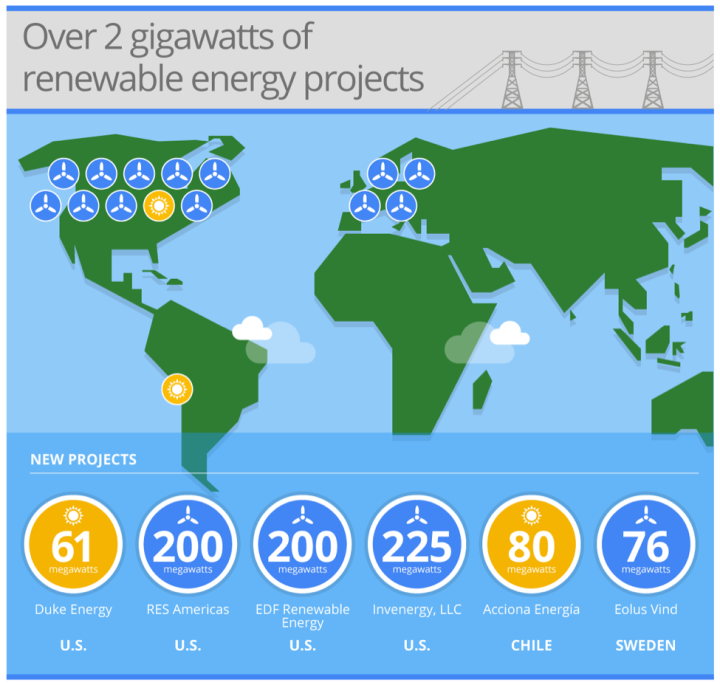
The move represents the largest purchase of renewable energy by a non-utility company, and features wind and solar projects from around the world that add an additional 842 megawatts of renewable energy capacity to power its data centers.
The search giant made a commitment, joined into by other tech giants like Microsoft and Apple, to triple its purchases of renewable energy by 2025, and ultimately to power 100 percent of its operations with clean energy. The company is hoping to have 3.6 gigawatts of energy lined up by that time.
“Across three countries, we’re nearly doubling the amount of renewable energy we’ve purchased to date,” said Urs Hölzle, senior vice president of technical infrastructure at Google in the blog post announcement. “We’re now up to 2 gigawatts — the equivalent to taking nearly 1 million cars off the road.”.
The contracts range from 10 to 20 years and will flow from projects scheduled to finish in the next two years within the U.S., Chile, and Sweden. Google hopes to have all 14 of its data centers worldwide running on renewable energy.
“With world leaders coming together at the COP21 UN conference on climate change in Paris this week, there’s no better time to focus on renewable energy,” Hölzle said. “We hope that our efforts play a small part in boosting all of us in the race to solve climate change.”
In the last five years, Google has made agreements to fund $2.5 billion in renewable energy projects in such countries as Germany and Kenya. During the summer, Google released Project Sunroof, which helps consumers make the switch to solar power much easier.
Editors' Recommendations
- ‘World’s largest sundial’ to double as green energy provider
- Experimental ‘blowhole’ renewable energy could be on its way to the U.S.
- Clean-energy startup backed by Bill Gates hopes to replace fossil fuels


